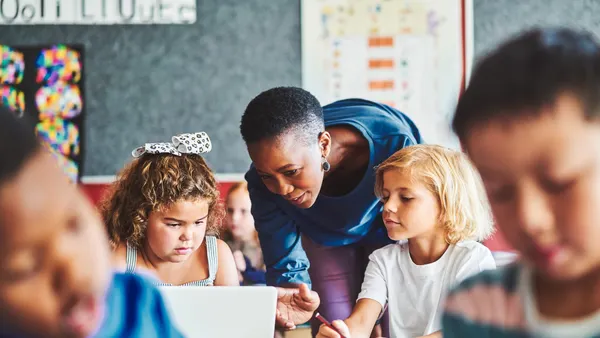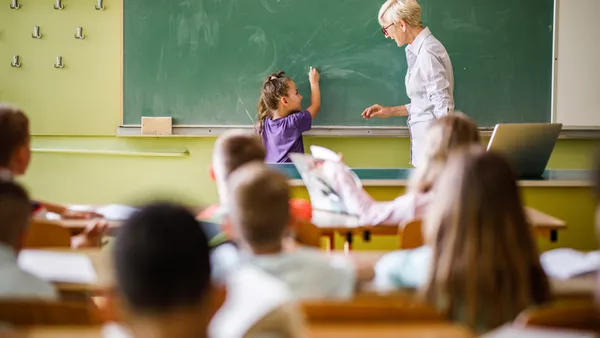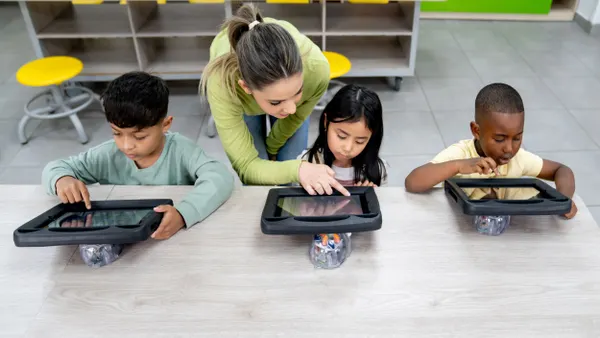So jazzed by a virtual reality (VR) session she attended, April Pollick bought four Google Cardboard headsets for her 7th grade class. Teaching Alan Gratz’s novel “Refugee” this semester, Pollick had the students walk through a virtual refugee camp, designing the lesson around the VR experience.
“The expressions on their faces were priceless: from disbelief to smiles to surprise,” says Pollick, who teaches English language arts teacher at Hopewell Jr. High School in Aliquippa, PA. “They have already requested to use them again with a new topic.”
Like 3D printers, smartphones and iPads, VR is the newest tech to gain a hold in education. Teachers, excited by the technology, are trying out VR headsets and content on their own, and then looking for ways to bring them in to classrooms. Administrators and curriculum designers are taking note, especially as more content, suitable for K12 classrooms, is appearing that can be worked easily into lessons.
While much of VR content is aimed at the gaming community, there are a number of experiences that dovetail with educational curriculum. A favorite of Pollick’s is Google Expeditions. But free VR iOS and Android apps can also be downloaded from outlets including The New York Times and Discovery. Educators don’t need expensive headsets to tap in either.
A range of cost options
The cost of VR headsets can certainly vary wildly, with a highly immersive VR headset priced around $1,000, including a PC gaming computer. True, that’s not likely to fold easily into school budgets. But a cheap Google Cardboard headset can clock in at just a few dollars.
Pollick, for example, spent just $10 for each of her headsets. And Tiffany Hitt, an art teacher at Lakeview Junior High School in Downers Grove, IL, bought 16 Google Cardboard headsets for about $200 for her art students this year. Students, however, do need smartphones to drop into the headsets and play the content. For those that don’t have one, Hitt will lend her own or students double up, she says.
Her first virtual stop with students this year? A tour of the Guggenheim Museum through Google Expeditions. “The students said it helped them visualize what was inside as I was talking,” says Hitt. “I heard them say, ‘Oh my gosh it’s so big and really round inside.’”
Elenisa Vasquez took her kids to the 2018 Winter Olympics through View-Master VR headsets the district bought for the J. Kawas Elementary School in Laredo, TX. Vasquez serves as the school’s technology trainer and manages the 25 View-Master headsets and Samsung smart devices that students use to view VR content.
The equipment arrived just at the beginning of the 2017-18 school year, and in the past few months students have already used the devices several times. Some have traveled to the North Pole. A language arts classroom reading R.J. Palacio’s book “Wonder,” traveled to the Pyramids of Giza. And a 5th grade science class studying plant adaption walked through a mangrove forest.
“VR helps to open a whole new world to them,” says Vasquez. “They can see things they can’t normally see and it’s a different experience than on TV or on the computer, an experience that kids may not have until they reach adulthood.”












